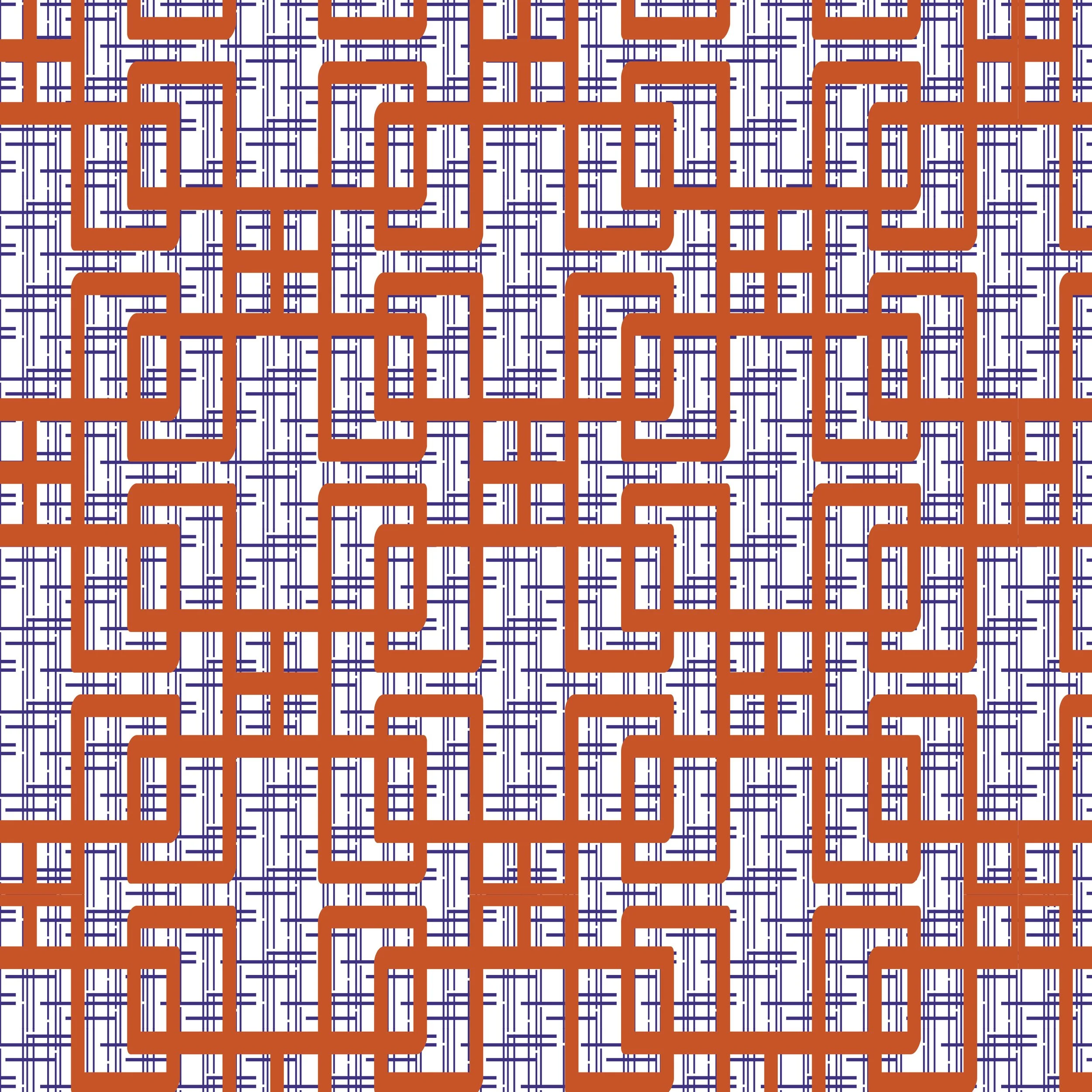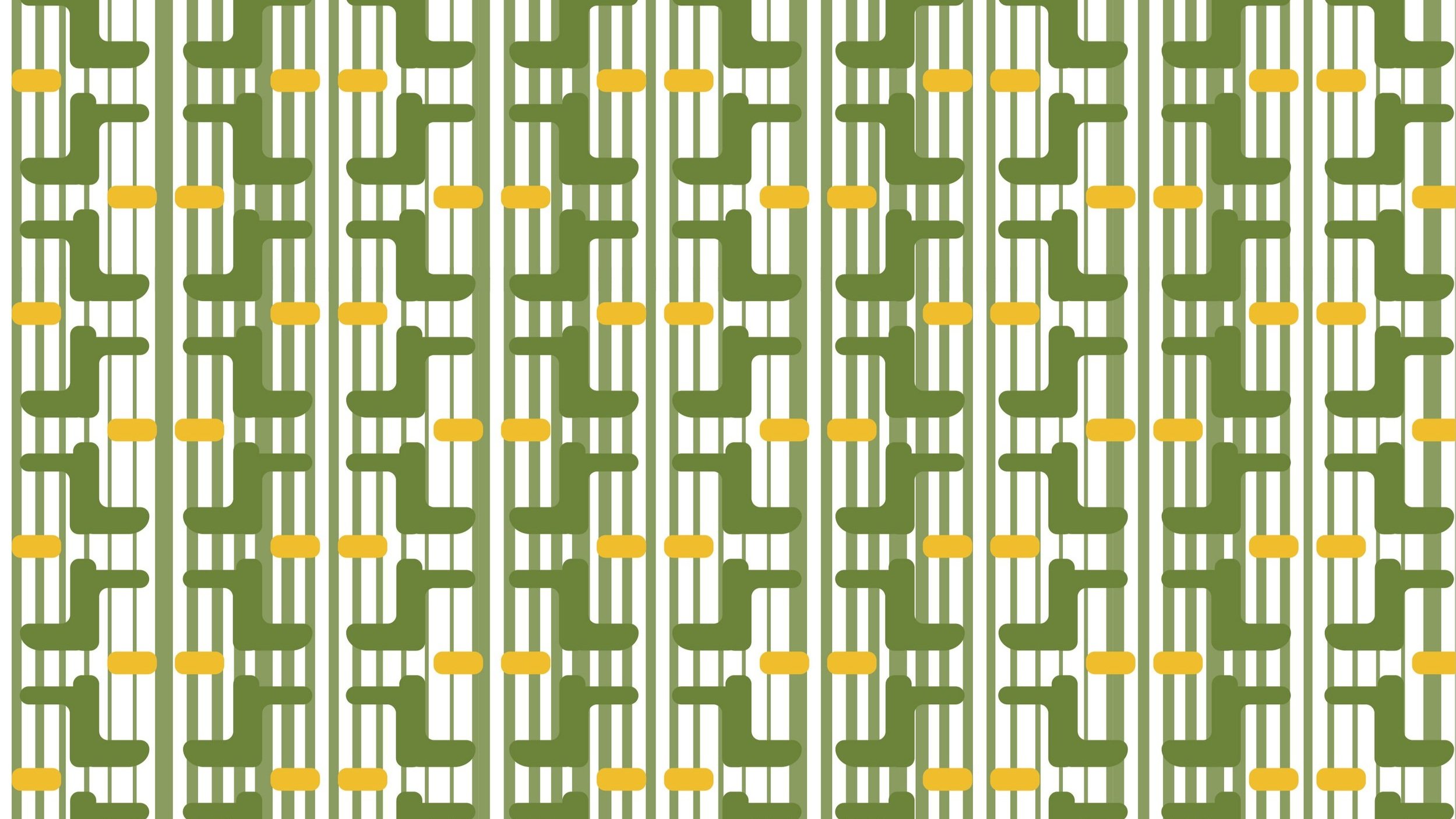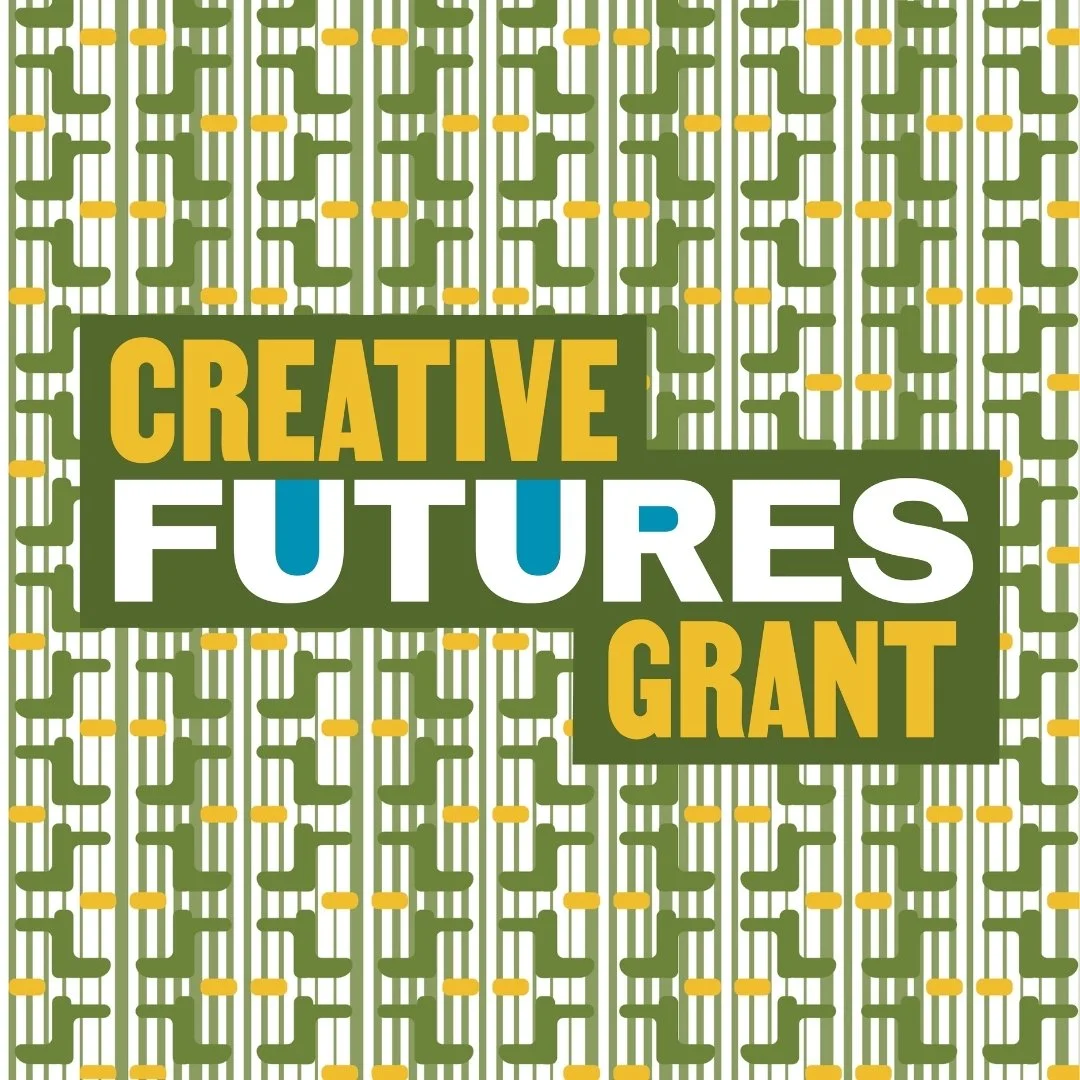
PROJECT GRANTS
Creative Futures Grant
Through the Creative Futures Grant, the Black Artists & Designers Guild is providing two $5,000 awards to Black graduate students in Craft to bring their creative projects to fruition.
The Creative Futures Grant is intended to support projects that Black students in craft may want to do but are not necessarily supported to create at their educational institutions. The grant seeks to move students toward actualizing all the phases of a creative project.
Be creative. Think BIG and outside the box. Think about what you want someone looking at your work a century from now to feel.
Projects must be based in craft traditions and can be: creation of new work, thesis exhibition, a permanent public art installation, a body of work outside of your graduate coursework, and travel to support research.
The deadline has passed for this grant
Funded by Maxwell | Hanrahan Foundation
Overview
The Creative Futures Grant supports projects celebrating Black diasporic expression in craft mediums by a Black student craftsperson
-
We are accepting applications from Black-identifying graduate students currently enrolled in MFA programs at US-based institutions. US citizenship is not a requirement for eligibility but you must have a US-based bank account for award disbursement.
Applicable Disciplines: All craft disciplines, including fiber arts, ceramics, furniture/wood working, metalworking/jewelry, glass, paper/book arts and textiles/wearable arts.
This grant is intended for projects celebrating Black diasporic expression and is not for business operations
Applicants must be able to receive taxable income in the U.S. and report this grant as income. *US bank account is required
If an applicant has been previously awarded a BADG grant they are not eligible to apply.
-
The application closes on September 22, 2025 at 11:59 P.M. Eastern Standard Time
Announcement of the 2025 Creative Futures Grant Award Recipient will be made
on or before October 28, 2025.
-
For any further questions, please feel free to contact us at grants@badguild.info

FAQs
-
Why is this only for craft artists and not inclusive of all design fields?
Eligibility is limited to craft artists because this grant is funded by a generous donation from Maxwell Hanrahan Foundation whose primary philanthropic focus is supporting craftspeople within the field of craft.
Are architecture, Industrial or fashion design included as craft disciplines?
No.
What is the difference between fashion design and fiber or textile arts?
Both involve working with textiles and can share similar techniques, however, fashion design aims to create wearable and marketable garments while fiber arts focus on artistic expression through textile mediums.
The end products of fashion design are intended for the consumer market, while the outcome of work by fiber artists are often created for aesthetic appreciation, cultural expression or conceptual purposes.
I work in several craft disciplines, but you are asking me to select a single discipline on my application. Will all of my work be considered or do I need to limit work samples to my primary medium?
All of your work is eligible for consideration but we would like you to specify the discipline that you work the most in. You can still include images of your work in other disciplines as long as all the work you share falls within the field of craft.
I use a craft medium, but I make conceptual work. Am I still eligible to apply?
Yes. While there is often a separation between fine art and traditional craft, the Creative Futures Grant Award will consider contemporary and traditional craft practices eligible for the award. When the primary intent is functional (e.g., pottery, quilting, furniture), the work is more likely to be seen as craft. If the intent is to express ideas, emotions, or concepts without a functional purpose, it leans more towards fine art. We are prepared to celebrate both approaches within the field of craft.
Contemporary artwork made with traditional craft materials can be considered both craft and fine art, depending on the context, intent, and reception. The boundaries are increasingly fluid, and many contemporary artists embrace this fluidity, challenging conventional distinctions and enriching both fields in the process.
-
What should my ten images include?
The applicant may use the image requirement as they see fit to represent their best work. They may choose to show multiple perspectives of a single piece or a range of different works within one of the disciplines, or the multidisciplinary, categories.
You may include one or more images that show multiple pieces/elements that are meant to be viewed together as a single work, or to show one or more pieces as installed in a gallery/space. Composite images (separate images combined into one image) are not acceptable.
Do the work sample images need to have a common theme or be a project, or is it just a cross-section of an artist’s work?
The applicant needs to submit the images that, in their opinion, best shows their work - whether it be in a series, or a cross-section of work. It is recommended that artists submit works that are conceptually related.
-
Who will select the winners?The recipient will be selected by a jury of three professionals from across the United States, currently active in the field of craft.
What is the selection criterion?
The jurors will make their selections based on artistic excellence and the feasibility of the project described in the application questions that reflects and represents the diversity of Black Diasporic expression in craft and craft based materials.
Could I ask how my images are viewed? What is the screen/projected size? Will they be viewed two or three at a time?
Images are viewed typically on a computer screen by each individual juror. For each submission, they see thumbnails of your five images, and enlarge each to be pretty much a full-screen size.
-
What is the award?
The Creative Futures Grant are two $5,000 cash prize intended to support projects that Black students in craft may want to do but are not necessarily supported to create at their educational institutions. The grant seeks to move students toward actualizing all the phases of a creative project.
If I am the winner, what will I receive?
The recipient of the award ward will receive two payments of $2,500 deposited by ACH to a US bank account. The second payment is sent after progress/impact report is submitted.
If I am the winner, what can I spend the money on?
The Creative Futures Grant is intended to support initiatives that demonstrate innovative models within the recipient's field of expertise.
BADG hopes the $5,000 grant will be directed towards endeavors that forward the recipient’s craft practice and legacy building by covering expenses related to creation of new work for your thesis exhibition, a permanent public art installation, a body of work outside of your graduate coursework , travel to support research connected to the creation of work, and or the continuation of a project you are already engaged in (as a part of or outside of your school work), but winners are not required to submit their use of the funds for approval.
The Creative Future Grant Award Recipient should note that the award money constitutes taxable income, and should file accordingly.
If I am the winner, what am I obligated to do?
The recipient is required to submit a one-page progress report with images (if appropriate) on how they used the fellowship winnings no later than February 15, 2026.

Meet the Jurors for THE 2025 CREATIVE Futures GRANT

-

Jerushia Graham
Printmaker, Fiber Artist, Papermaker, Book Artist, & Arts Educator and Museum Coordinator for the Robert C. Williams Museum of Papermaking, Atlanta
-

Kandy G. Lopez
Multimedia Artist working in Fiber and Associate Professor in the Department of Communication, Media and Arts at the Halmos College of Art & Sciences at NOVA Southeastern University
-

Lydia Thompson
Ceramic Artist and Professor of Art at UNC Chapel Hill


PAST RECIPIENTS
RECIPIENT OF THE 2024 CREATIVE Legacy Maker GRANT
The 2024 Creative Legacy Makers Grant is a $10,000 award designed to acknowledge and support an established Black craftsperson or collective with 30 or more years in the field who continues to impact contemporary craft and affirm Black Diasporic culture.
Funded by Maxwell | Hanrahan Foundation

JAMES WATKINS, LUBBOCK, TX
I am leaving a legacy in the ceramic community and Texas Tech University as a Paul Whitfield Horn Distinguished Professor Emeritus. The Horn Distinguished Professorship is the highest honor Texas Tech University may bestow on members of its faculty. These Professorships are granted to professors in recognition of national and international distinction for outstanding research or other creative scholarly achievements. My greatest achievements have been my publications on Ceramics and Architectural Delineation. Alternative Kilns & Firing Techniques, which I co-authored with Paul Andrew Wandless has been translated into both German and Chinese. Having the opportunity to share my ceramics research on a national and international level has been my greatest accomplishment.


RECIPIENTS OF THE 2023 CREATIVE VISIONARY GRANT
The Creative Visionary Grant is designed for advanced practitioners with 10 to 25 years of active studio practice in art, architecture, design and material culture. These individuals are focused on telling the real and untold story of the Black Diasporic community.

-

Ifeoma Ebo
Brooklyn NY
Reparations in Public Space is an exhibition that strives to change spatial narratives through a series of speculative design ideas that transform spaces of trauma into spaces of healing and liberation.
-

Jomo Tariku
Springfield, VA
JUXTAPOSE is a new way of doing installations for shows and museums where we give credit to unnamed creators, their culture, their skills and unique contribution while we use the references as a way to create new things that can be attributed back to the Black culture.
-

Derrick Wood-Morrow
Chicago, IL & Providence, RI
(Un)Imagined Lives is a multimedia film project using co-authored ethnographic research from areas of contested ownership and colonial occupation to create both a physical and digital archive concerning the spiritual offspring of the Queer Black folx lost during the Middle Passage.


RECIPIENTS OF THE 2021 CreatiVE FUTURES GRANT
Through the Creative Futures Grant, BADG provides opportunities for four selected Black undergraduate and graduate students in Architecture, Design and Fine Art to receive a cash award, a chance to join the canon of Black Art & Design and bring their art and design dreams closer to becoming reality. More information to come.

-

Abena Otema Danquah
Architecture, Rhode Island School of Design
The Kaya Pavilion proposes a space for learning, gathering, play, and rest. Proposed to be installed in a city where public space is utilized as an abstract concept, this project will reveal the impact of planning for human encounters and the coexistence of multiple publics.
-

Janiya Douglas
Art History & Curatorial Studies, Spelman College
The project aims to cultivate an institutional space that centers and reflects a consciousness solely rooted in the experiences of Black Americans in the South. The architecture of Souf, a hub of Southern Black Intellectual Thought, will exist as a campus that embodies the cultural aesthetics of Southern Black expression. Janiya proposed an architectural design for a community-arts institution that centers on the ancestral experiences and lineage of Southern Black Cultural expression.
-

LaRissa Rogers
New Genres, University of California Los Angeles
Exploring the dual nature of flight and migration as a means of survival and preservation, this six-foot soil sculpture will pay homage to the interconnected histories in the soil and land from which they are created. Mimicking the appearance of a core sample (a section of a naturally occurring substance such as earth or corporeal matter), the sculpture will speak particularly to diasporic resilience through the lens of place and belonging. A video will be projected onto the sculpture to draw micro and macro parallels between objects, images, family narrative, historical moments, landscapes, and the afterlife of slavery.
-

Neysa Wellington
Photography, Tyler School of Art and Architecture, Temple University
"Ena D)" a mother's love is an exploration of the mother's role in different family dynamics throughout the African continent and the diaspora. This visual storytelling project will serve as a catalyst for healing and understanding the role of mothers and the value of becoming your own.

MAKE A DONATION TODAY


